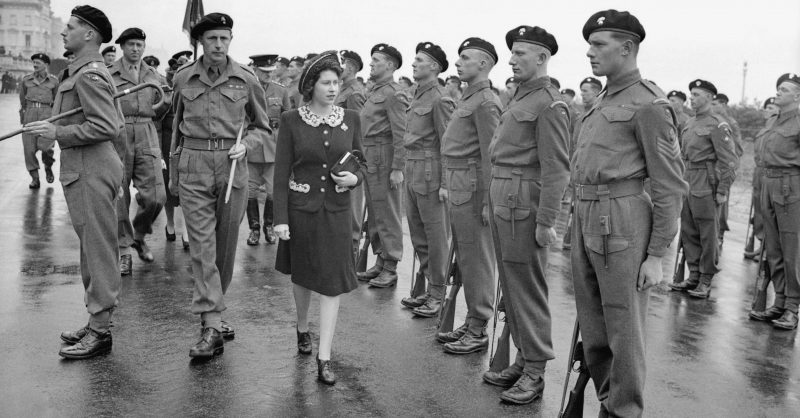So it was that Elizabeth became the first woman from the royal family who served in the army.
“I declare before you all that my whole life, whether it be long or short, shall be devoted to your service and the service of our great imperial family to which we all belong.” – Princess Elizabeth during the tour, in a broadcast to the British Commonwealth on her 21st birthday.
When the Second World War began, the future queen was only thirteen years old. At the beginning of hostilities, the mother of Elizabeth II was appointed commander of the territorial support service and the Royal Navy Service.
After London was bombed by Germans, Douglas McGarel Hogg, 1st Viscount Hailsham suggested to the royal family that young Elizabeth and her sister Margaret would be evacuated to Canada, a safe place.
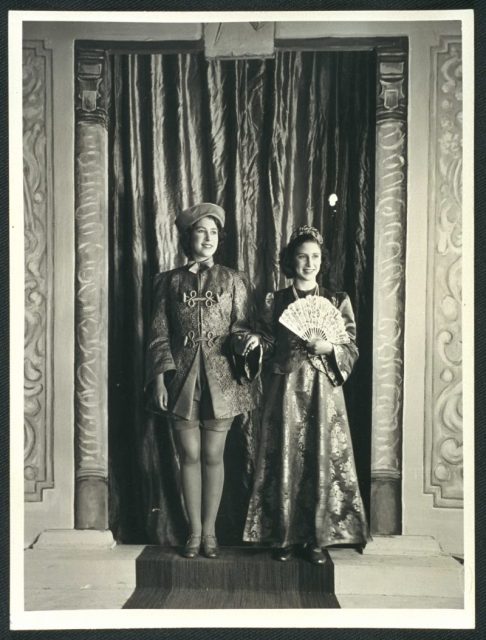
The queen’s answer was unexpected and remained forever in the annals of history. It also motivated the inhabitants of the country to fight against Hitler’s Germany. She replied that, “The children won’t go without me, I won’t leave without the King, and the King will never leave.”
For the first few winter months, Princesses Elizabeth and Margaret remained at Balmoral Castle in the Scottish Highlands. Balmoral has always been a haven for the royal family, and the young sisters remained there until the Christmas of 1939.
After the mobilization of British troops and the blackouts began, the royal family moved to the House Sandringham in Norfolk but then returned to Windsor Castle.
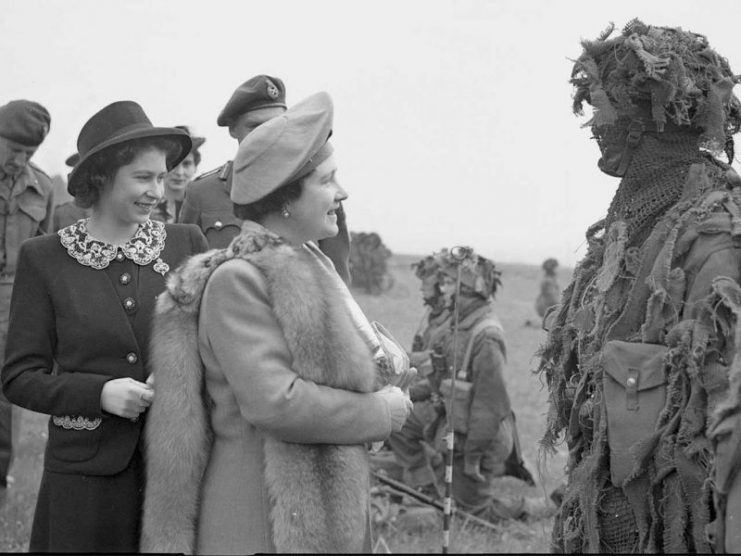
On October 13, 1940, for the first time, Elizabeth appeared on the Children’s Hour radio program addressing children affected by the scourge of war. She stated: “We are trying to do all we can to help our gallant sailors, soldiers, and airmen, and we are trying, too, to bear our share of the danger and sadness of war. We know, every one of us, that in the end all will be well”.
In addition, during the war, the young Princess Elizabeth took part in Christmas performances dedicated to children. In 1941, she played the role of Cinderella’s Prince. Each year before the end of the war, these performances took place in the Waterloo Chamber of Windsor Castle.
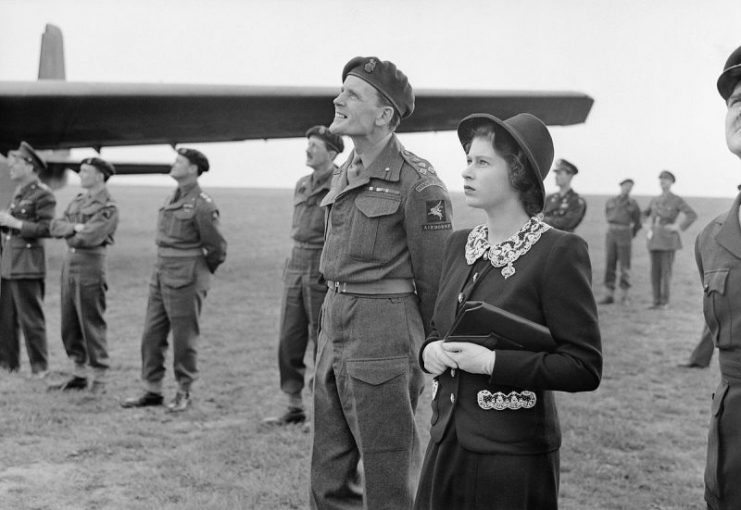
In 1944, Parliament changed the law, making Elizabeth one of the State Advisers in the event of the king’s incapacity or his absence abroad. In February 1945, she was appointed as an honorary second subaltern in the Auxiliary Territorial Service (ATS) with the service number of 230873.
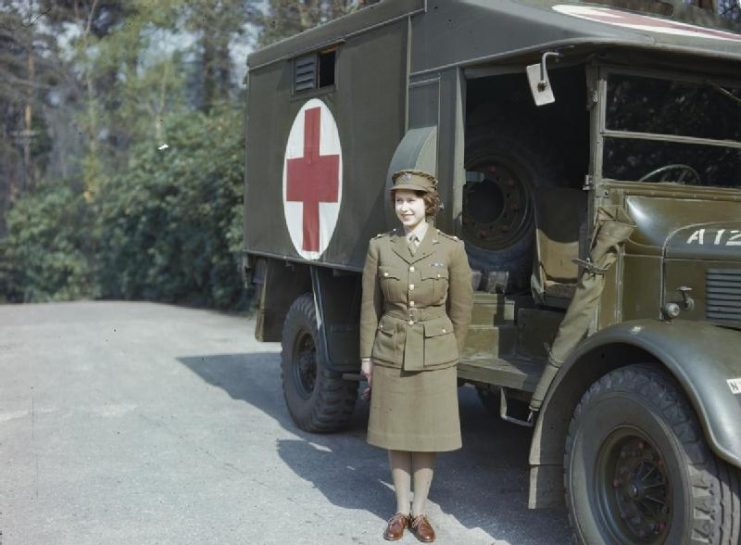
Elizabeth was trained as a mechanic and driver. Five months later, she received the rank of honorary junior commander. Because of this, she developed a love of driving which remains an important part of her life.
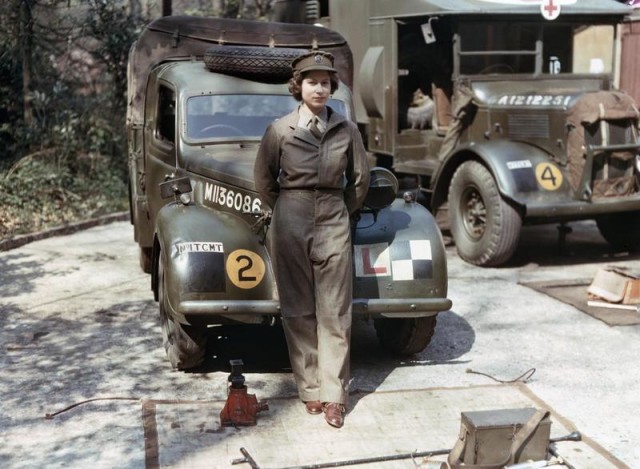
The ATS was a female unit of the British army. Women served at home and in France, performing work in various support roles although never in front-line combat. A large number of British women worked as nurses, radio operators, warehouse workers with weapons, postmen, and many other roles.
Many of the privileged did not seek to avoid war. For example, Mary, the daughter of Winston Churchill, also served in the ATS.
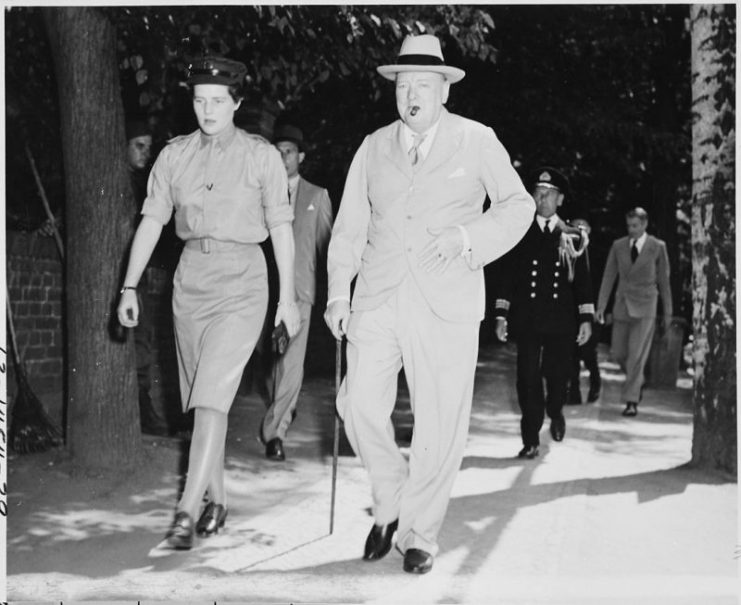
During the five months of her service, Elizabeth repaired trucks during the day then returned to Windsor Castle in the evening. She was serious about her duties and, although her presence caused excitement, she was modest and worked hard.
So it was that Elizabeth became the first woman from the royal family who served in the army.
“I have never forgotten the sorrow and the pride I felt as my sister and I huddled around the nursery wireless set listening to my father’s [George VI’s] inspiring words on that fateful day in 1939 [at the start of the World War II].
Not for a single moment did I imagine that this solemn and awful duty would one day fall to me.” – Queen Elizabeth II, on Friday 4 March 1983.
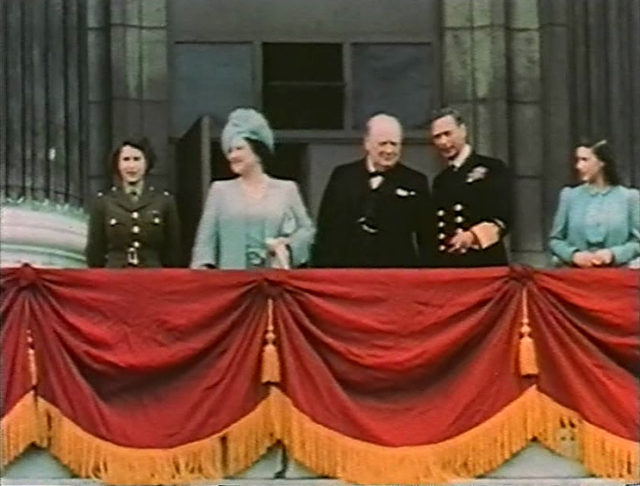
After Victory Day in Europe, Princesses Margaret and Elizabeth, who survived World War II, walked anonymously through the streets of central London.
Read another story from us: The Truth About the King George WWII Campaign Medal Ribbons
Elizabeth later said in a rare interview, “We asked my parents if we could go out and see for ourselves. I remember we were terrified of being recognized… I remember lines of unknown people linking arms and walking down Whitehall, all of us just swept along on a tide of happiness and relief.”
